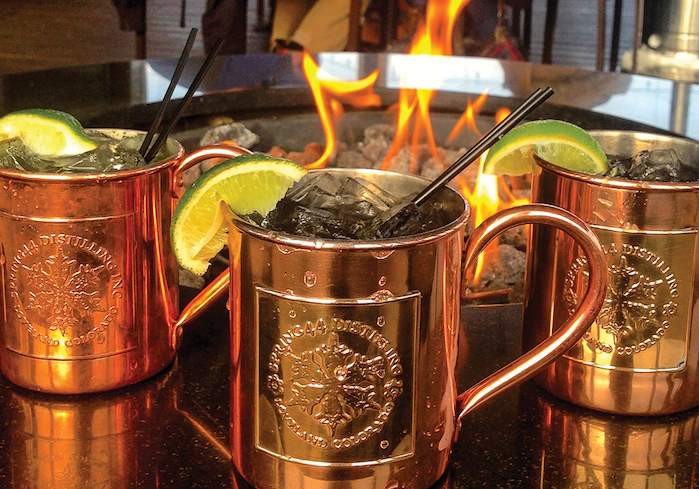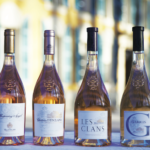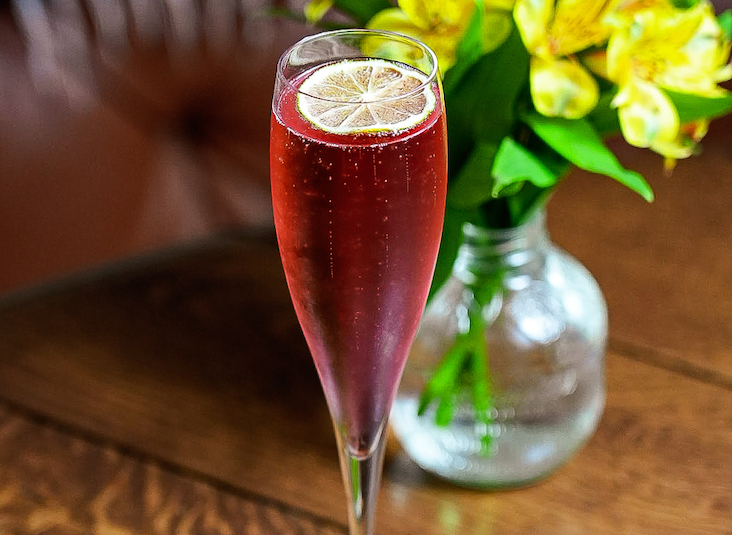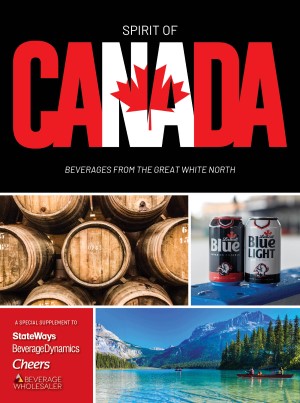Vodka may not be the most exciting spirit for consumers captivated by whiskey or Millennials eager for the new and exotic. But vodka retains the lion’s share—33%—of spirit sales and it continues to grow, though growth has slowed in recent years.
Even with the current bourbon boom and the continued interest in pre-Prohibition cocktails, vodka has held as a steady and reliable sales leader on-premise. And with the current popularity of the Moscow Mule, that vodka-ginger beer-lime juice highball created in the 1940s to sell more Smirnoff in this country, vodka is gaining a foothold back in the trend game.
In other words, maybe there’s a backlash to the backlash against vodka.
“The thinking that says ‘vodka pays the bills’ implies a grudging acceptance of vodka behind the bar,” says T. Cole Newton, mixologist at the New Orleans boutique hotel, The Troubadour, which includes the Petit Lion restaurant, rooftop bar Monkey Board and the lobby’s Lounge. “But I say, since people like vodka, shouldn’t we be in the business of giving people what they want?”
Vodka is especially popular with the vast majority of consumers who prefer their alcohol served in an uncomplicated fashion, and are not interested in drinking as an art form or a culinary endeavor, Newton says. So it’s important to offer plenty of vodka options from which they can choose.
“Vodka is one of the most approachable spirits out there, making it easier for consumers to try new cocktails they might not otherwise be open to trying,” says Jon Augustin, beverage manager for the 16-unit, healthy-eating chain True Food Kitchen, part of Phoenix, AZ-based Fox Restaurant Concepts. “It’s the most neutral spirit we can use, and really lets all the other ingredients in the cocktails—like fresh fruit and vegetables—shine and not get overpowered by smoky, oaky tastes.”
With locations primarily operating in large metro markets (six more are planned for this year), True Food buyers look for locally available organic vodkas to stock first, as well as try to source gluten-free options. “We don’t always necessarily look to have the larger vodka brands and instead look to partner with more of the boutique brands or whoever is going to provide the best organic, quality product,” says Augustin.
The Thai Grapefruit Martini (Thai basil, grapefruit and organic vodka) and Pomegranate Mule (fig-infused vodka, ginger honey and lime), both $12, are the leading vodka cocktails on the current menu, and provide the majority of the chain’s vodka sales, Augustin says. “We typically sell only about 15 vodka sodas (or other typically vodka mixed drinks) per year across the entire country.”

The Thai Grapefruit Martini, made with Thai basil, grapefruit and organic vodka, is one of the leading vodka cocktails at True Food Kitchen.

“People who aren’t cocktail people can order a Mule and feel like they are cocktail people after all.” —T. Cole Newton, New Orleans-based mixologist and bar owner
The Mule Kick
As for that Moscow Mule trend, the drink has developed its own category. The three-unit, Denver, CO-based ViewHouse Eatery Bar and Rooftop has a separate Mule menu to drive sales.
“The Moscow Mule has always been a solid staple in the beverage and restaurant industry,” says Brad Manske, vice president of ViewHouse (pictured atop). As Mules are refreshing, flavorful and pair well with food, “we decided to expand and develop a line of mules using all spirits, including an infused vodka, tequila and whiskey, and have found that guests love the variety.”
Two of the seven Mules currently served at ViewHouse are vodka based, and there’s also a mostly vodka Martini menu (priced $9 to $10), as well as drinks using both house-infused and branded vodkas on the specialty cocktail menu. Locavorism extends to vodka here as well, with local brands including Spring 44 and Goat Artisan Vodka included in the 20 brands carried.
“The Mules are all really popular, though the original flavor and the infused vodka one lead the pack,” Manske says. “Our other specialty cocktails, many of which are made with vodka, are all blended with fresh fruit, fresh juices and other ingredients, are also popular, because everyone can find a type of flavor profile they like to drink.”
Manske says that vodka works well at ViewHouse all day long. “We continue to see that vodka has steady sales and tremendous growth opportunities throughout various times of the day (lunch, happy hour, dinner, late night), and amongst a number of demographics,” he says. “This is why we chose to offer our own infused vodkas in-house, as well as a wide variety of drinks made with the spirit in different flavor profiles.”

The Gosutochiri at Roka bar in San Francisco, with vodka, sake, elderflower liqueur, muddled jalapeño, cucumber and shiso: Vodka adds alcohol without greatly altering the Martini’s flavor profile.
A Gateway Spirit
The success of menus constructed around uncomplicated, vodka-based highballs, Martinis and Mules shows that every cocktail menu ought to include at least a few drinks that are less complicated than current trends dictate, says Newton.
In addition to creating the cocktail program for The Troubadour, Newton owns his own self-described “cocktail dive bar” Twelve Mile Limit. Gateway cocktails and beer are the drinks of choice there.
Without vodka drinks, Newton says, customers there might just switch over to wine or beer. One of his popular vodka cocktails is a Mule variant made with citrus and amaro.
“People who aren’t cocktail people can order a Mule and feel like they are cocktail people after all,” says Newton. “And vodka is a good match for drinks with amaros as it dilutes the flavor a bit, mixing them down while not lowering the alcohol as water would.”
Alex Riddle leads the bar program at San Francisco’s Roka Bar, part of the four-unit Roka Akor steak, seafood and sushi restaurant group. He also turns to vodka for cocktail making when looking to add alcohol to a drink without greatly altering the flavor profile.
“The Gosutochiri is a great example,” Riddle says of Roka’s chili Martini, made with vodka, sake, elderflower liqueur, muddled jalapeño, cucumber and shiso. “There is a fairly complex balance of flavor between the shiso, cucumber, pepper and sake. Adding a very flavorful spirit like gin would throw that balance off and overshadow some of the more delicate components of the cocktail. Vodka is perfect, because it allows me to maintain the balance, while strengthening the drink.”
Other vodka-based drinks on the current menu include the Maiden Voyage (Stolichnaya Elit vodka, Peychaud’s bitters, cherry preserves, lime) and the Roka Mule. Cocktails are generally $12 at Roka.

Martini Makers
Riddle selects vodkas based on how they will be used at Roka. “Most of the time when choosing vodkas I look for something as neutral and unobtrusive as possible to let the other flavors shine through.”
But when making Martini-esque drinks that actually showcase the vodka, he adds, “I tend to look to something with a rounder and more developed flavor. For this purpose I generally prefer potato vodkas, as I find them to have the fullest and most-pleasant flavor profile.”
Roka carries about eight different vodkas, and even with the vodka cocktails featured on the menu, it’s the tried and true that does the best for the bar. “Despite having many vodka cocktail offerings, we still get many, many orders for vodka sodas, vodka water etc.,” which continue to be among the most popular orders.
Vodka Martinis still have a great following, and some cocktail-centric bars have yielded to that lasting desire by offering them with a more flavorful twist. At the new Diamond Reef in Brooklyn, the bar’s Steakhouse Martini version features vodka with pickling brines from jars of capers, onions, olives and pepperoncinis, along with a dash of apple cider vinegar.
From Russia with Love
While some of the trendy, vodka-focused bars that opened in the late 1990s and early 21st century have closed, including New York’s Pravda and Boston’s Frost Ice Loft, others thrive by sticking to one of the thematic models: the Soviet-style restaurant. In Austin, TX, it’s the Russian House Restaurant, Bar and Bistro that hews to a Soviet-era theme complete with murals, posters and a classic menu of borscht, caviar, pirozkhi, pelmeni and other Eastern European specialties.
Manager Anastasiya Belysheva says about 70% of Russian House’s alcohol sales are derived from vodka, no surprise given the 101 in-house infused variants available. What’s more, guests on arrival are offered complimentary shots of chilled vodka that come served along with pickled vegetables, sauerkraut, radishes, bread and salt. “It’s the traditional way to take your vodka,” she says.
Opened for four years, Russian House started with about 35 infusions, many of them arrayed in the bar area in four-liter jars. But as the infusions gained popularity, bartenders started experimenting. Now the jalapeno-carrot, banana-coconut, plum, cigar and birchwood infusions are among the most popular, along with one created by the chef using 35 herbs and spices.
“Austin is kind of hipster in its clientele, so we get a lot of 30-something young professionals who are very beer focused,” Belysheva says. “But our vodkas have become more popular as they get comfortable with us.”

The I Love You, Honeybear cocktail, served at the Monkey Board rooftop bar in New Orleans hotel The Troubadour, is made with Cathead honeysuckle vodka, honeydew syrup, blanc vermouth and wildflower honey shrub.
As you walk in to Russian House, “there’s an entire wall of infusions, and we support them with lots of signs,” Belysheva says. “When customers see the signs for things they’ve never even heard of, like lingonberry, they get more curious about and interested in them.” Guests can opt for a selection of “mini shots” of the infusions of their choice, priced at $7 for four, $10 for six and $14 for eight.
Leading cocktails are Moscow Mules and White Russians, and sometimes the infused Martinis. “But for the most part, the people who come here like the taste of our vodkas and often just get it on the rocks to dilute the intensity a bit,” Belysheva says.
Russian House uses a Ukrainian vodka, Kruto, as its house and infusion brand, but carries about 40 brands in all. About 15 are from Russia, and most of the rest from Eastern European countries including Poland and the Ukraine.
Local brands including Dripping Springs are also featured, with some leading national brands including Grey Goose, Belvedere and Chopin rounding out the list.
The success of Russia House and its 101 infusions shows how some trends don’t wait more than 50 years before returning—the time it roughly took for many mid-century cocktails to make their way back in style. Many younger consumers are new to the infusion craze of the 1990s, and the idea that with a little modifying spirit, modern Martinis can be cool as well.
Either way, though, vodka’s place is secure behind most bars. Says Roka’s Riddle, “I think that vodka holds a secure place in the cocktail world, and will continue to for the foreseeable future. It’s an invaluable ingredient that will certainly always have a place behind any bar and in any cocktail program.”
Jack Robertiello is a spirits writer and judge based in Brooklyn, NY.







